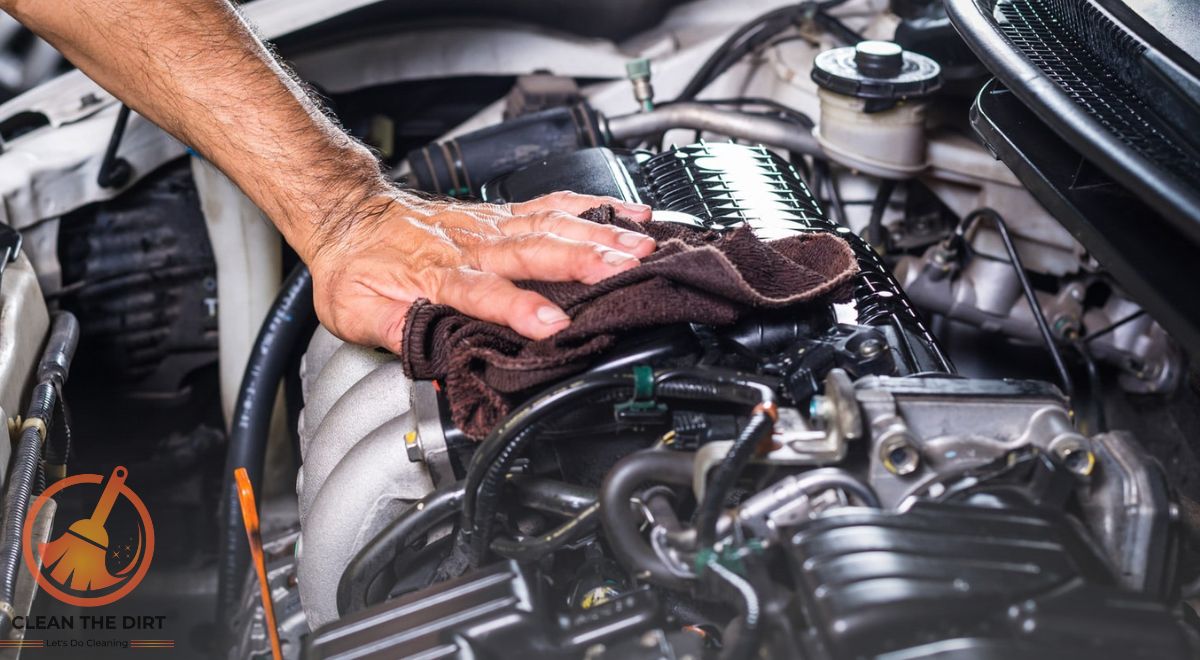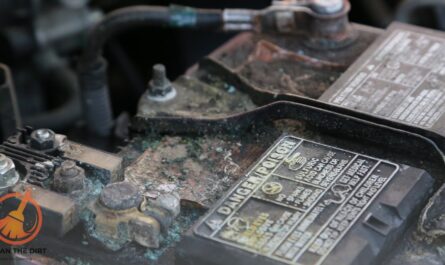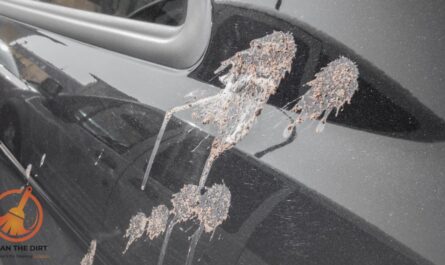Table of Contents
Introduction
Keeping your engine bay clean is more than just about appearances. It’s essential for maintaining the health and longevity of your vehicle. But when cleaning under the hood, many people automatically think of using water. However, water isn’t always the best option, especially if you want to avoid the risks of damaging electrical components or causing rust. That’s where learning how to clean engine bay without water comes in handy.
Whether you’re dealing with an older vehicle, live in an area with water restrictions, or simply prefer a waterless approach, this guide will walk you through the steps needed to get a sparkling clean engine bay without a single drop of water. By the end, you’ll know how to clean engine bay without water and keep it looking great with minimal effort.
Why Clean Your Engine Bay Without Water?
1. Protect Your Engine’s Electrical Components
One of the biggest reasons to learn how to clean engine bay without water is to protect your vehicle’s sensitive electronic parts. Modern engines are packed with sensors, wiring, and connectors that don’t mix well with moisture. A simple mistake with water can lead to electrical shorts, corrosion, or even permanent damage to these crucial components. By opting for a waterless cleaning method, you’re taking an extra step to ensure the longevity of your engine.
2. Environmental Benefits
Another compelling reason to explore how to clean engine bay without water is its eco-friendly nature. When you use water, there’s often runoff that contains oils, grease, and other contaminants. This polluted water can make its way into storm drains, eventually harming wildlife and local water sources. A waterless approach eliminates this risk, allowing you to keep both your engine and the environment clean.
3. Convenience and Versatility
Knowing how to clean engine bay without water also means you can clean your engine practically anywhere. You don’t need a hose or access to large amounts of water, making this method incredibly convenient, especially if you live in an area with water restrictions. Plus, without water, there’s no need to worry about making a mess or dealing with drying time.
4. Avoiding Potential Damage
Water can sometimes seep into areas it shouldn’t, causing rust or other issues over time. By learning how to clean engine bay without water, you avoid the risks associated with moisture buildup in your engine bay. This helps maintain the structural integrity of your engine components and keeps everything running smoothly.
Maintaining the cleanliness of your vehicle extends beyond just the engine bay. For a well-rounded approach to vehicle care, you might also want to explore how to clean bike chain to keep your ride smooth, or learn how to clean car seat straps to ensure safety and hygiene. If you’ve ever had to deal with bird poop on your car, check out our guide on how to clean bird poop off car to prevent damage to your paint.
Essential Tools and Materials
When you’re figuring out how to clean engine bay without water, having the right tools and materials makes all the difference. Here’s a list of what you’ll need to get the job done effectively.
1. Engine Degreaser
The key to a successful waterless clean is a high-quality engine degreaser. This product helps break down grease and grime without the need for water. Choose a degreaser that’s suitable for your engine type and follow the manufacturer’s instructions for best results. This is a crucial step in learning how to clean engine bay without water effectively.
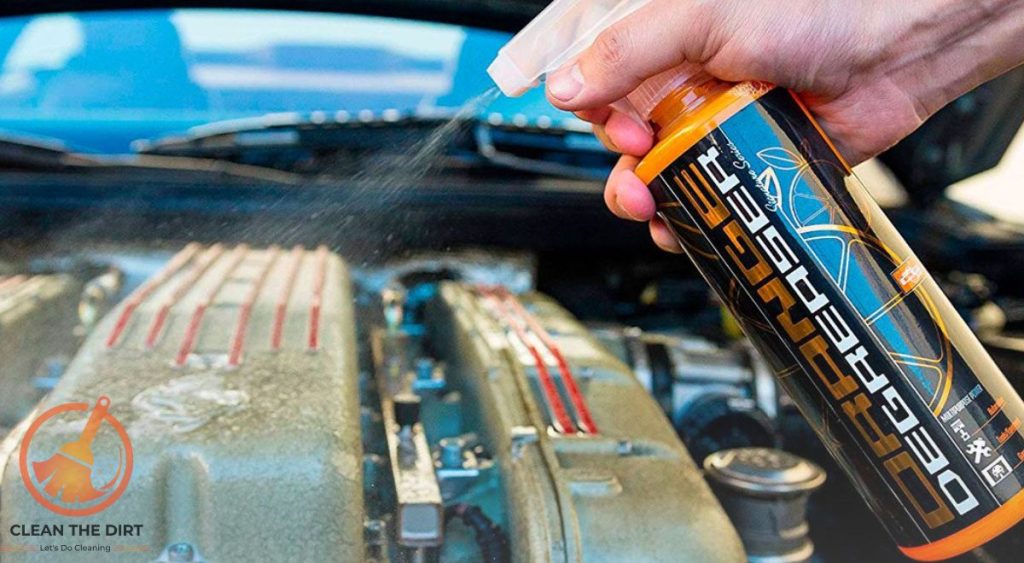
2. Microfiber Towels
Microfiber towels are essential for wiping down surfaces and removing residues. They are soft, absorbent, and less likely to leave lint behind. When you’re exploring how to clean engine bay without water, having plenty of these towels on hand will help you achieve a thorough clean without scratching delicate surfaces.
3. Soft Brushes
Soft-bristled brushes are great for reaching into crevices and scrubbing away dirt without damaging your engine’s components. They are especially useful for cleaning areas with heavy buildup. Invest in a few different sizes to handle various parts of your engine bay as you learn how to clean engine bay without water.
4. Air Compressor or Canned Air
An air compressor or canned air is perfect for blowing away dust and debris from hard-to-reach areas. This tool is particularly useful for finishing up your cleaning process, ensuring that no particles are left behind. Mastering how to clean engine bay without water is easier when you have a way to clear out the fine dust that can accumulate in crevices.
5. Protective Covers
To prevent accidental damage, use plastic or silicone covers to shield sensitive components like the alternator, air intake, and electrical connectors. This step is crucial for safely practicing how to clean engine bay without water and avoiding potential issues.
6. Detailing Spray
For a final touch, a detailing spray can help give your engine bay a polished look. It adds shine and provides a protective layer against future dirt accumulation. This is a great way to complete your waterless cleaning routine, enhancing your results as you master how to clean engine bay without water.
Having these tools and materials ready will streamline the process and help you achieve a spotless engine bay without relying on water.
How to Clean Engine Bay Without Water? A Step-by-Step Guide
Cleaning your engine bay without water might seem challenging, but with the right approach, it can be both effective and straightforward. Follow these steps to master how to clean engine bay without water.
Step 1: Prepare Your Engine Bay
Before diving into the cleaning process, make sure your engine is cool to avoid any potential burns or damage. Disconnect the battery to prevent any electrical issues. To safeguard sensitive components such as the alternator and air intake, cover them with plastic bags or silicone covers. This preparation is key when learning how to clean engine bay without water safely.
Step 2: Apply a Waterless Engine Degreaser
Start by applying a waterless engine degreaser to the dirty areas of your engine bay. Spray the degreaser generously on the greasy or grimy spots. As instructed by the product label, let it sit for that amount of time. This step is crucial in understanding how to clean engine bay without water, as the degreaser breaks down dirt and oil without needing water.
Step 3: Agitate with Soft Brushes
Once the degreaser has had time to work, take a soft-bristled brush and gently scrub the areas where you applied the degreaser. Use different brush sizes to reach various parts of the engine bay, especially those with heavier buildup. This step helps loosen the grime and ensures a thorough cleaning, making it an important part of this guide on how to clean engine bay without water.
Step 4: Wipe Down with Microfiber Towels
After scrubbing, use clean microfiber towels to wipe off the degreaser and dirt. Gently wipe down all the surfaces, changing towels as they become dirty. This process removes any remaining residue and helps polish the engine bay. Microfiber towels are essential in how to clean engine bay without water because they clean effectively without scratching.
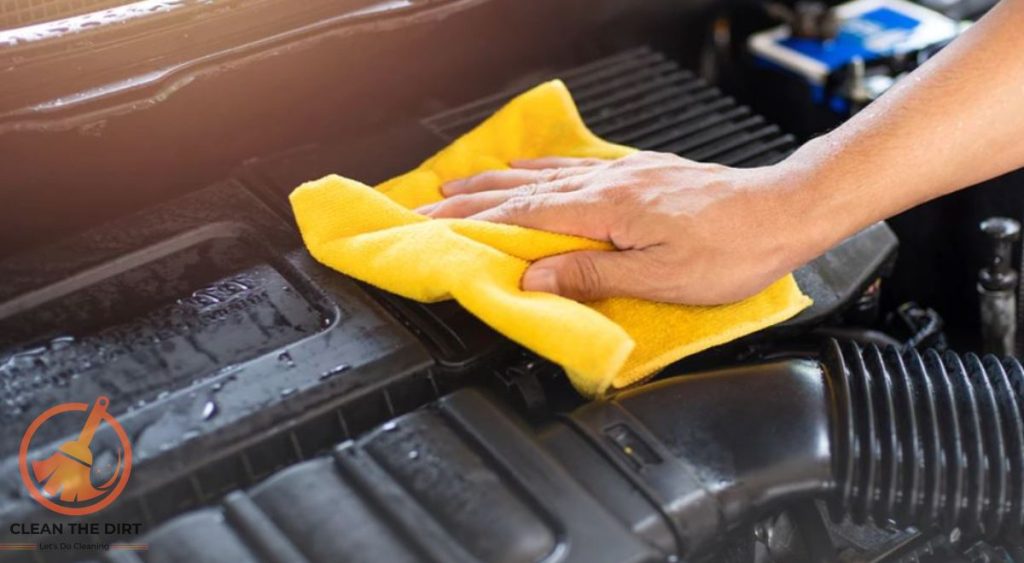
Step 5: Blow Away Dust and Debris
To finish up, use an air compressor or canned air to blow away any dust and loose debris from hard-to-reach areas. This step is crucial for a complete clean, ensuring no particles are left behind. Mastering this step will enhance your results when learning how to clean engine bay without water.
Step 6: Apply a Detailing Spray
For a polished look, spray a detailing product on the engine bay surfaces. This final touch not only enhances the appearance but also provides a protective layer that helps repel future dirt. Applying a detailing spray is a great way to complete your waterless cleaning routine, showcasing your skill in how to clean engine bay without water.
By following these steps, you’ll be able to maintain a clean and well-maintained engine bay without ever needing to use water. This approach not only protects your vehicle’s components but also offers a more convenient and eco-friendly cleaning solution.
For visibility and safety, knowing how to clean windshield and how to clean windshield wipers is crucial. Additionally, keeping your car’s interior spotless is essential. Our article on how to clean car seats fabric will help you tackle stains and maintain a fresh look, while tips on how to clean car carpet by hand can keep your flooring looking brand new.
Common Mistakes to Avoid
When you’re learning how to clean engine bay without water, it’s easy to make a few missteps along the way. To ensure your cleaning process is effective and safe, here are some common mistakes to avoid.
1. Using Harsh Chemicals
One of the biggest mistakes is using harsh chemicals that can damage engine components or leave residues. Always choose a mild, waterless engine degreaser that’s specifically designed for automotive use. Knowing how to clean engine bay without water means selecting the right products to protect your engine while achieving a thorough clean.
2. Neglecting to Cover Sensitive Parts
Failing to cover sensitive components such as the alternator, air intake, and electrical connectors can lead to accidental damage. Make sure to use plastic or silicone covers to shield these areas before you start cleaning. Properly covering these parts is an important aspect of this guide on how to clean engine bay without water effectively and safely.
3. Overusing the Degreaser
Applying too much degreaser can lead to excess residue and may make the cleaning process more unmanageable. Follow the manufacturer’s instructions for application amounts and avoid overusing the product. Mastering how to clean engine bay without water involves understanding the right balance and avoiding over-application.
4. Skipping the Drying Step
After using a degreaser, it’s crucial to thoroughly wipe and dry all surfaces. Skipping this step can leave behind moisture that attracts dirt and dust. To keep your engine bay clean, always use microfiber towels to remove any remaining product and ensure everything is dry. This is a key part of learning how to clean engine bay without water.
5. Ignoring Regular Maintenance
Neglecting regular inspections and spot cleaning can lead to heavy buildup that’s harder to manage. Incorporate regular maintenance into your routine to prevent grime from accumulating. Regular upkeep is an essential step in learning how to clean engine bay without water, helping you avoid more extensive cleaning sessions.
6. Using the Wrong Tools
Using inappropriate tools, such as rough brushes or abrasive towels, can scratch or damage your engine components. Stick to soft brushes and microfiber towels that are designed for delicate surfaces. Understanding how to clean engine bay without water includes using the right tools to protect your engine and achieve the best results.
By being mindful of these common mistakes, you’ll improve your technique and ensure that your engine bay stays clean and well-maintained. Mastering how to clean engine bay without water involves careful attention to detail and avoiding these common errors.
Tips for Maintaining a Clean Engine Bay
Keeping your engine bay in top condition doesn’t end with a one-time clean. Regular maintenance is key to ensuring your engine bay stays new and running smoothly. Here are some practical tips for maintaining a clean engine bay, especially if you’re following a waterless cleaning approach.
1. Perform Regular Inspections
Regularly check your engine bay for any signs of dirt, grime, or potential leaks. By catching issues early, you can address them before they become major problems. Incorporating a brief inspection into your routine helps you stay on top of how to clean engine bay without water, making your cleaning efforts more effective.
2. Spot Clean as Needed
Instead of waiting for a heavy buildup of dirt, understand smaller messes as they occur. Use a microfiber towel and a small amount of degreaser to spot clean any areas that look dirty. This proactive approach reduces the amount of work needed for a major cleaning session and is a good practice in how to clean engine bay without water.
3. Use Protective Sprays
Applying a protective spray designed for engine bays can help repel dust and grime, making future cleanings easier. These sprays create a barrier that prevents dirt from sticking to surfaces. This tip is particularly useful for maintaining a clean engine bay and complements your understanding of how to clean engine bay without water.
4. Keep It Dry
After any cleaning session, ensure that everything is thoroughly dry. Waterless cleaning methods are great, but any residual moisture can attract dust and grime. Make sure to use microfiber towels to thoroughly dry all surfaces, helping you keep a clean engine bay over time.
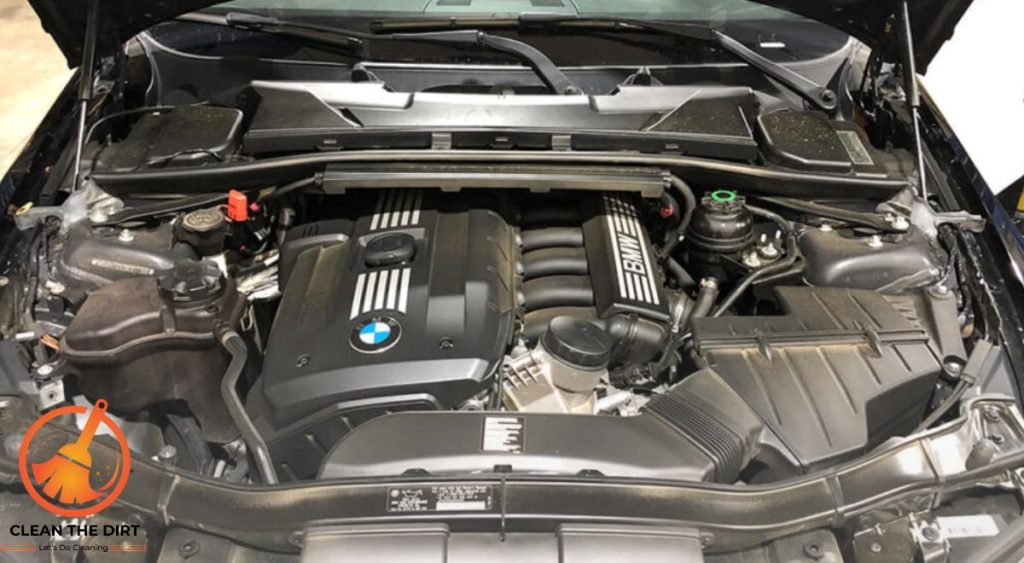
5. Avoid Overusing Chemicals
While degreasers are effective, overusing them can sometimes lead to residue buildup. Stick to recommended amounts and follow the product instructions closely. Knowing how to clean engine bay without water includes understanding the balance between using enough product and avoiding excess.
6. Address Leaks Promptly
If you notice any leaks or drips in your engine bay, address them promptly. Leaks can lead to oil and grime buildup, making it harder to keep your engine bay clean. Regularly checking and fixing leaks supports your efforts in how to clean engine bay without water.
By following these tips, you’ll maintain a cleaner engine bay and make your waterless cleaning process more efficient. Regular attention and the right practices ensure that your engine bay remains in great shape, reflecting the benefits of understanding how to clean engine bay without water.
Conclusion
Cleaning your engine bay without water might seem like a daunting task at first, but with the right techniques, it’s both effective and straightforward. Understanding how to clean engine bay without water not only helps protect sensitive components from moisture but also offers an eco-friendly alternative that reduces water waste and pollution.
By following the steps outlined, from preparing your engine bay and using the right degreasers to mastering the art of spot cleaning and regular maintenance, you can keep your engine bay looking new. Regular attention and proper tools are key to maintaining a clean engine without relying on water, ensuring both safety and efficiency.
Remember, the goal of this guide on how to clean engine bay without water is not just about achieving a spotless look but also about preserving the integrity of your engine and contributing to a greener environment. By adopting these waterless cleaning methods, you’re making a smart choice for your vehicle and the planet.
Don’t forget to address issues like corrosion with our guide on how to clean corrosion off car battery, ensuring all parts of your vehicle are in top condition. For more detailed guides, explore our related articles and keep your vehicle in prime shape.
Here’s a quick comparison of cleaning your engine bay with water versus a waterless method. This table highlights the key differences in safety, convenience, and environmental impact.
| Aspect | Cleaning Engine Bay with Water | Cleaning Engine Bay Without Water |
|---|---|---|
| Safety | Risk of electrical damage if water gets into sensitive components. | Safer for electrical components; no risk of moisture-related damage. |
| Environmental Impact | Water runoff may carry oils and chemicals, potentially polluting the environment. | More eco-friendly; no runoff to contaminate water sources. |
| Convenience | Requires access to a water source and may involve more setup. | Can be done almost anywhere without the need for water or hoses. |
| Effectiveness | Good for heavy cleaning; water helps to rinse off residues. | Effective for regular maintenance and spot cleaning; may require multiple applications for heavy grime. |
| Drying Time | Requires drying time to ensure all parts are dry, reducing risk of rust and damage. | No drying time needed if done properly with microfiber towels. |
| Tool Requirements | Requires a hose, water source, and possibly additional rinsing tools. | Requires degreasers, microfiber towels, soft brushes, and air compressor or canned air. |
| Complexity | Generally straightforward but involves managing water and runoff. | Simplified process; focuses on using degreasers and wiping down surfaces. |
| Maintenance | May require more frequent deep cleaning due to water-related issues. | Regular spot cleaning can maintain cleanliness and reduce the need for deep cleaning. |
So, the next time you think about giving your engine bay a thorough clean, put these tips into practice and enjoy the benefits of a clean, well-maintained engine bay without the need for water. Your vehicle will thank you, and you’ll appreciate the ease and effectiveness of a waterless approach.
Frequently Asked Questions (FAQs) for How to Clean Engine Bay Without Water?
Why should I clean my engine bay without water?
Cleaning your engine bay without water helps protect sensitive electrical components and prevent rust. It’s also more environmentally friendly, as it avoids runoff that could pollute the environment. Additionally, a waterless approach is convenient and can be done almost anywhere.
What tools and materials do I need for a waterless engine bay cleaning?
For a successful waterless clean, you’ll need an engine degreaser, microfiber towels, soft brushes, an air compressor or canned air, protective covers, and a detailing spray. These tools help you effectively clean and maintain your engine bay without using water.
How often should I clean my engine bay without water?
The frequency of cleaning depends on how often you use your vehicle and the conditions it’s exposed to. Generally, a light cleaning every few months and spot cleaning as needed will help keep your engine bay in good shape. Regular inspections can help you determine when a more thorough cleaning is necessary.
Can I use any degreaser for cleaning my engine bay without water?
No, it’s important to use a degreaser specifically designed for engine cleaning. Harsh or incorrect chemicals can damage your engine’s components or leave residues. Always choose a product suitable for your engine and follow the manufacturer’s instructions.
How do I prevent damage to sensitive engine parts while cleaning?
To prevent damage, cover sensitive components such as the alternator, air intake, and electrical connectors with plastic or silicone covers before you start cleaning. This will help protect these parts from accidental exposure to degreasers and debris.
What should I do if I notice a leak in my engine bay?
If you spot a leak, address it as soon as possible. Leaks can lead to oil and grime buildup, making it harder to keep your engine bay clean. Regularly checking and fixing leaks is an important part of maintaining a clean engine bay and complements your efforts in how to clean engine bay without water.
Is it necessary to dry the engine bay after cleaning?
Yes, thoroughly drying the engine bay after cleaning is crucial. Moisture can attract dust and grime, which can lead to buildup over time. Use microfiber towels to ensure all surfaces are completely dry, which helps maintain a clean engine bay.
Can I use a waterless approach if my engine bay is heavily soiled?
Yes, a waterless approach can be effective even for heavily soiled engine bays. It may require additional scrubbing with soft brushes and multiple applications of degreaser. Be patient and follow the steps carefully to achieve a thorough cleaning.
You May Also Like: How to Clean Car Windows Without Streaks? Expert Tips

